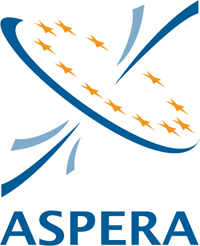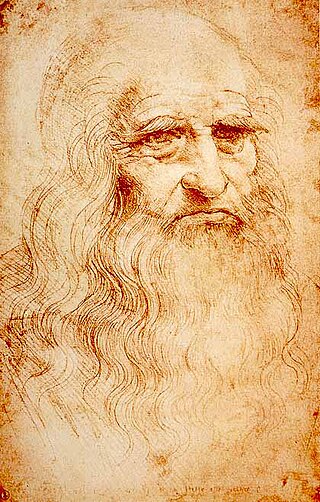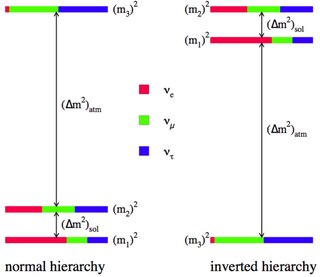
Cosmic rays or astroparticles are high-energy particles or clusters of particles that move through space at nearly the speed of light. They originate from the Sun, from outside of the Solar System in our own galaxy, and from distant galaxies. Upon impact with Earth's atmosphere, cosmic rays produce showers of secondary particles, some of which reach the surface, although the bulk are deflected off into space by the magnetosphere or the heliosphere.

The Discourses and Mathematical Demonstrations Relating to Two New Sciences published in 1638 was Galileo Galilei's final book and a scientific testament covering much of his work in physics over the preceding thirty years. It was written partly in Italian and partly in Latin.

Astrophysics is a science that employs the methods and principles of physics and chemistry in the study of astronomical objects and phenomena. As one of the founders of the discipline, James Keeler, said, Astrophysics "seeks to ascertain the nature of the heavenly bodies, rather than their positions or motions in space–what they are, rather than where they are." Among the subjects studied are the Sun, other stars, galaxies, extrasolar planets, the interstellar medium and the cosmic microwave background. Emissions from these objects are examined across all parts of the electromagnetic spectrum, and the properties examined include luminosity, density, temperature, and chemical composition. Because astrophysics is a very broad subject, astrophysicists apply concepts and methods from many disciplines of physics, including classical mechanics, electromagnetism, statistical mechanics, thermodynamics, quantum mechanics, relativity, nuclear and particle physics, and atomic and molecular physics.

MAGIC is a system of two Imaging Atmospheric Cherenkov telescopes situated at the Roque de los Muchachos Observatory on La Palma, one of the Canary Islands, at about 2200 m above sea level. MAGIC detects particle showers released by gamma rays, using the Cherenkov radiation, i.e., faint light radiated by the charged particles in the showers. With a diameter of 17 meters for the reflecting surface, it was the largest in the world before the construction of H.E.S.S. II.
In particle physics, the radiation length is a characteristic of a material, related to the energy loss of high energy particles electromagnetically interacting with it. It is defined as the mean length into the material at which the energy of an electron is reduced by the factor 1/e.
The Max-Planck-Institut für Kernphysik is a research institute in Heidelberg, Germany.
Astroparticle physics, also called particle astrophysics, is a branch of particle physics that studies elementary particles of astronomical origin and their relation to astrophysics and cosmology. It is a relatively new field of research emerging at the intersection of particle physics, astronomy, astrophysics, detector physics, relativity, solid state physics, and cosmology. Partly motivated by the discovery of neutrino oscillation, the field has undergone rapid development, both theoretically and experimentally, since the early 2000s.

ASPERA is a network of national government agencies responsible for coordinating and funding national research efforts in astroparticle physics.

Domenico Pacini was an Italian physicist noted for his contributions to the discovery of cosmic rays.

Science and technology in Italy has a long presence, from the Roman era and the Renaissance. Through the centuries, Italy has advanced the scientific community which produced many significant inventions and discoveries in biology, physics, chemistry, mathematics, astronomy, and the other sciences. In 2019, Italy was the 6th world producer of scientific articles publishing more than 155,000 documents. From 1996 to 2000, it published a total of 2 million scientific articles. Italy was ranked 28th in the Global Innovation Index in 2022.
Multi-messenger astronomy is astronomy based on the coordinated observation and interpretation of signals carried by disparate "messengers": electromagnetic radiation, gravitational waves, neutrinos, and cosmic rays. They are created by different astrophysical processes, and thus reveal different information about their sources.
The Dark Matter Particle Explorer, or DAMPE, also known as Wukong, is a Chinese Academy of Sciences (CAS) satellite which launched on 17 December 2015. The satellite was launched on a Long March 2D rocket from Launch Pad 603 at the LC-43 complex, also known as the South Launch Site, at the Jiuquan Satellite Launch Center. It is China's first space observatory.
TXS 0506+056 is a very high energy blazar – a quasar with a relativistic jet pointing directly towards Earth – of BL Lac-type. With a redshift of 0.3365 ± 0.0010, it is about 1.75 gigaparsecs from Earth. Its approximate location on the sky is off the left shoulder of the constellation Orion. Discovered as a radio source in 1983, the blazar has since been observed across the entire electromagnetic spectrum.
Francis Louis Halzen is a Belgian particle physicist. He is the Hilldale and Gregory Breit Distinguished Professor at the University of Wisconsin–Madison and Director of its Institute for Elementary Particle Physics. Halzen is the Principal Investigator of the IceCube Neutrino Observatory at the Amundsen–Scott South Pole Station in Antarctica, the world's largest neutrino detector which has been operational since 2010.

Roberto Battiston is an Italian physicist, specialized in the field of fundamental physics and elementary particles, and leading experts in the physics of cosmic rays. He was the president of the Italian Space Agency (ASI) from 2014 to 2018 and president of the Italian National Institute for Nuclear Physics (INFN) Committee on Astroparticle Physics from 2009 to 2014.
Alessandro De Angelis joined the Society of Jesus in 1581, at the age of 22. He devoted himself to teaching at the Collegio Romano, reaching the highest level of the academic body between 1612 and 1617, in the period of the first dispute between Galileo Galilei and the Roman Church.

The problem of neutrino mass hierarchy is related to the fact that present experimental data on neutrino oscillations allow two possible classes of solutions.
The Southern Wide-field Gamma-ray Observatory (SWGO) is a gamma-ray observatory to be constructed in South America. It is designed to detect air shower particles initiated by gamma rays entering the Earth's atmosphere.
Stefan Funk is a German astroparticle physicist. He is a professor at the Erlangen Centre for Astroparticle Physics at the FAU Erlangen-Nuernberg in Germany and an elected a fellow of the American Physical Society.
Fiorenza Donato is an Italian theoretical astroparticle physicist whose research involves the study of cosmic rays and their use in understanding the nature of dark matter, the possible products of particle collisions involving dark matter, the creation and behavior of antimatter among high-energy cosmic particles, and gamma-ray astronomy. She is a full professor of theoretical physics at the University of Turin.










